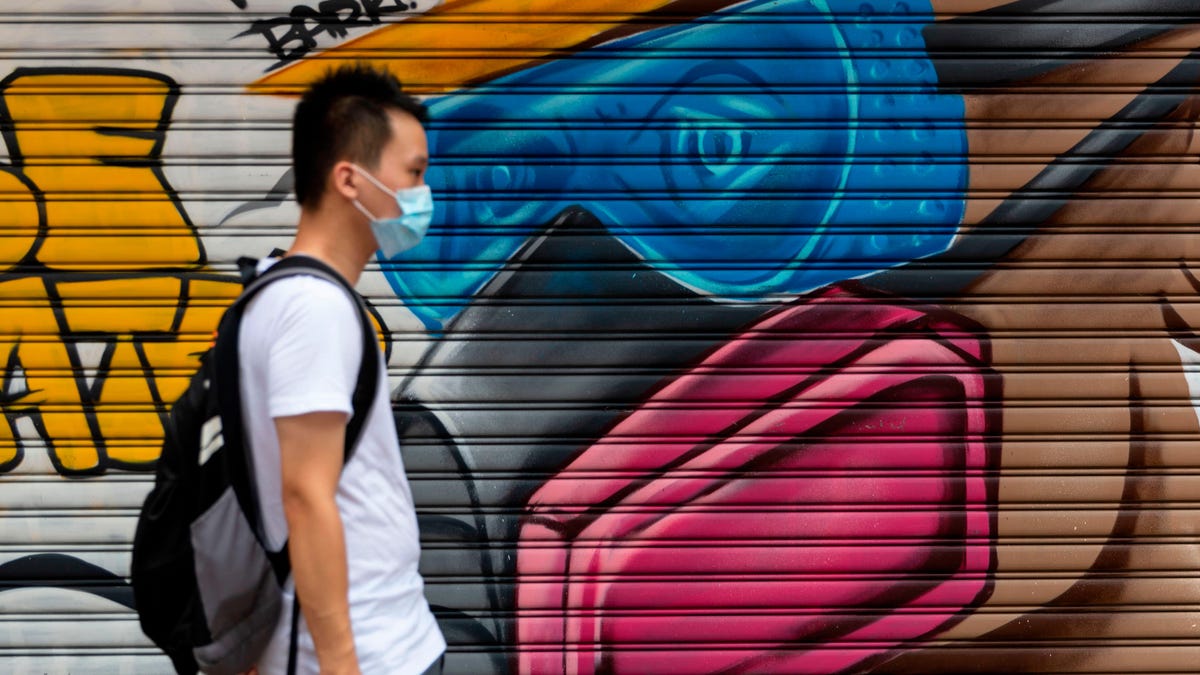First confirmed case of coronavirus reinfection is no cause for alarm
COVID-19 may be able to reinfect some people, but you shouldn't panic.

Researchers in Hong Kong reported the first case of coronavirus reinfection on Aug. 24.
On Monday, researchers at the University of Hong Kong sent out a press release to news agencies reporting the first confirmed case of coronavirus "reinfection." Whether individuals who have recovered from the disease can acquire it a second time has been one of the lingering questions since the beginning of the pandemic and previous anecdotal evidence or reinfection has been suggested.
The Hong Kong team claim to have confirmed the reinfection by sequencing the genome of the virus, showing the second infection was different to the first. Other scientists were cautious about reading too much into the results, suggesting generalizations should not be made after one case of reinfection and without access to the full study, which is yet to be released.
"We need to not jump to any conclusions," said Maria van Kerkhove, a technical lead on the WHO's COVID-19 response team, during a press briefing Monday. "What I think is really important is that we put this in context. There have been 24 million cases reported to date. We need to look at something like this at a population level."
The case, a 33-year-old male, was diagnosed with COVID-19 on March 26. He only showed mild symptoms but was hospitalized three days later following Hong Kong protocols. After two weeks, he was released after two negative tests for the virus and a serology test showed no detectable antibodies -- his immune system hadn't responded significantly to the virus.
In August, the man travelled to the United Kingdom and on to Spain, where a saliva test conducted at the airport on Aug. 15 reportedly showed he was positive for the coronavirus a second time. The researchers were able to show the RNA -- the genetic code -- of the virus isolated from the individual was slightly different between the first and second infection.
Researchers are slowly piecing together how the body reacts to infection by SARS-CoV-2, the coronavirus which causes COVID-19. When confronted with a threat, the immune system produces antibodies and specialized white blood cells that can fight off disease. The immune system also tries to produce a sort of "memory", fingerprinting the threat so if it tries to invade again, it can quickly snuff it out.
How effectively the coronavirus stimulates an immune response is important for the development of a potential coronavirus vaccine. But questions remain about COVID-19 and immunity. The immune response differs between individuals and is potentially dependent on the level of infection. Some patients might only have mild symptoms and their immune response could be weaker than others. Scientists looking at the plasma of convalescent plasma donors found antibody levels vary widely. Other studies have shown strong antibody responses in patients with more severe disease.
"It's key to get an understanding of what level of immunity is required for protection from reinfection, which is difficult to assess right now," Jennifer Juno, an immunologist at the Doherty Institute in Australia, told CNET in July.
It's also important to understand this is a study of one person -- and it's an unusual one. "This is a rare instance where the patient did not produce antibodies the first time," says Gaétan Burgio, a geneticist at Australian National University in Canberra. It's difficult to make broad, sweeping or generalized statements about COVID-19 reinfection based on this single case, Burgio notes.
But even if reinfection is possible, it's not surprising and there's no cause for alarm. On Monday, Akiko Iwasaki, an immunologist at Yale University, shared an illuminating thread on Twitter highlighting the case as "a textbook example of how immunity should work." The second infection generated a great immune response than the first, which is what is expected to happen. In the case of the Hong Kong patient, the second infection was asymptomatic, suggesting the immune response helped keep the disease at bay.
"The finding that a person was re-infected with a different strain of COVID-19 reminds us yet again not to get ahead of ourselves, not to be complacent, and recognize we are still learning about the pathology of this virus," said Sarah Palmer, a virologist at the Westmead Institute for Medical Research in Australia.
An outstanding question is whether the patient was able to spread the virus during the second infection. Even though viral RNA was detected in a saliva swab, was he shedding enough to infect others? "We don't know if he would have replicated enough virus to cause further spread," notes Peter Doherty, a laureate professor from the University of Melbourne.
One bugbear for some scientists, including Burgio, is the dissemination of the new information via press release. This has become increasingly common during the pandemic and it can be problematic. It prevents discussion on the paper before it hits the media and is disseminated to the public, sometimes leading to erroneous conclusions.
"We have decided to issue a press release before the official publication because we think this is an important finding that would have implications for public health," Kelvin To, a clinical microbiologist at the University of Hong Kong and author on the study, says.
The New York Times reports the full study is set to be published in the journal Clinical Infectious Diseases. Kelvin To told CNET "I am not sure exactly when it will be published in Clinical Infectious Diseases, but should be very soon."
Update Aug. 25: Adds additional comments from Doherty and Palmer.
Update Aug. 25, 9:30 p.m. PT: Correspondence from Kelvin To added

